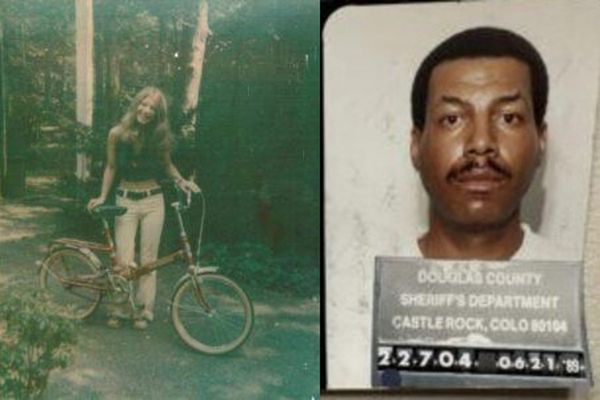
Scrutineering plays a crucial role for any F1 grand prix, as it's the technical checking of cars to ensure all entrants are legal throughout a race weekend.
It is something all cars and drivers must go through where one failed test could result in disqualification. So, the FIA - who carry out the checks - uses a rigorous process to ensure everything is as precise as possible.
But, how does the process work and what are race officials looking for when determining if an entrant is complying to the regulations or not?
How does scrutineering work in F1?
There are three different steps to scrutineering at an F1 weekend: pre-event, in-race and post-race.
For pre-event scrutineering, a team must submit a declaration form - provided by the FIA - no later than two hours before first practice and stewards will summon any constructor that has failed to meet the deadline.
On the declaration form, teams must confirm each of its cars complies with the regulations before further checks are made at random by the FIA to ensure what gets submitted matches the actual thing. This system has been in place since 2019 for practicality reasons as beforehand, cars queued in the pitlane on Thursdays to get scrutineered by race officials which was a longer process.
Mistakes have still happened under the new system though. Mercedes once received a €25,000 fine at the 2022 Singapore Grand Prix for submitting an inaccurate pre-event scrutineering form regarding Lewis Hamilton.

Its form declared that Hamilton was not going to wear jewellery during the weekend, but he had a nose stud attached which Mercedes was unaware of. Despite it being an accident, the declaration form was still deemed inaccurate, so Mercedes was fined post-qualifying.
As pre-event scrutineering is now done by teams, it makes in-race scrutineering even more important as it’s the first proper chance the FIA gets to check cars are legal. A way in which this is done is by having race officials inside each garage during track time where they will observe the car, monitor the work that gets done around it and check tyres for conformity.
Once in 2015, a team was reprimanded by scrutineer Kartik Chaturvedi for filling fuel too quickly so it is always a very serious and thorough process.
In-race scrutineering was then helped by the introduction of laser scans in 2022, which complete additional random checks to ensure as much as possible that each car is legal. This was introduced to accommodate the vast regulation changes as the previous metal cut-outs used to check parts were not suitable for the new ground-effect machines.
Under the new system, teams share CAD data with the FIA where the scans then check if what gets presented matches the actual car. Not all checks are done electronically though because physical tests to ensure wing and floor flexing on cars are legal is still done on the rigs in the FIA garage, as well as ones which observe the DRS-opening space measurement.
Alongside this, cars can also be randomly stopped by the FIA and called to the weighbridge during practice or qualifying, with some tests including measuring weight, front and rear wing deflection, car floor deflection, size conformity and torque input on the paddle shift.
However, it is not uncommon for a driver to accidentally miss the weighbridge and the penalty for this can be quite severe.

Article 35.1 b) of the sporting regulations states: “Any driver who fails to stop when asked to do so, and then fails to bring the car back to the FIA garage, or if work is carried out on the car before it is returned to the FIA garage, will be referred to the stewards."
This rule was enforced for the 2020 season after Pierre Gasly was controversially forced into a pitlane start at the 2019 Azerbaijan GP for accidentally missing the weighbridge checks during Friday practice, while Sergio Perez was given the same sanction for an identical reason in Austin.
It prompted complaints from teams, so the rule tweak now means the punishment will be decided once it has been discussed with the stewards.
There is also post-race scrutineering which many fans will see on their screens before the podium ceremony. In this, both the driver and car are weighed in parc ferme to ensure they meet the minimum requirement. Drivers aren’t allowed to drink any water until this is completed, as it could offset a driver’s weight before the measurement.
Unlike the pre-event and in-race scrutineering, the method used for post-race scrutineering has remained largely the same across several years. But it is one which causes controversy, as approximately one-fifth of cars get checked due to the limited time available. For example, only Carlos Sainz, Gasly, Valtteri Bottas and Alex Albon were scrutinised after the 2024 Bahrain GP.
Not every inch of the car is tested either, as race officials randomly select different parts to be observed post-session so a plank, for example, could go five grands prix without being checked. However, it arguably makes sense because the FIA state by using this method teams never know what components are being looked at each race - so they can’t risk trying to get around the rules.
|
Aerodynamic component and bodywork areas checked after 2024 Bahrain GP |
|
Floor body |
|
Floor fences |
|
Floor edge wing |
|
Nose |
|
Forward chassis |
|
Mid chassis |
|
Sidepod |
|
Coke panel |
|
Engine cover |
|
Tail |
|
Exhaust pipe |
|
Front wing profiles |
|
Front wing endplate body |
|
Front wing tip |
|
Front wing diveplane |
|
Front wing endplate |
|
Rear wing profiles |
|
Pylons |
|
Rear wing beam |
|
Rear wing endplate body |
|
Rear wing tip |
|
Rear wing endplate |
Has an F1 car ever failed scrutineering?
Not every car in the history of F1 has passed a scrutineering check as some drivers have been disqualified from a grand prix for not complying to the regulations.

Renault had both cars disqualified from the 2019 Japanese Grand Prix for using illegal driver aids, while Sebastian Vettel lost his podium finish at the 2021 Hungarian GP after officials could not take the required fuel sample from his Aston Martin post-race.
The most notable disqualification of recent years though came at the 2023 United States GP when Charles Leclerc and Lewis Hamilton both failed post-race scrutineering due to excessive wear on their rear skid blocks.
It was something that caused a lot of controversy because Hamilton and Leclerc were two of just four cars to be checked alongside Max Verstappen and Lando Norris.
Given only 50% of those checked were deemed legal, questions were raised about the rest of the grid particularly the other Mercedes and Ferrari entrants because the technical delegate may have checked George Russell and Carlos Sainz’s car if he believed they could have been running too low as well.
Hamilton was not happy because he said he’d “heard from several different sources that there were a lot of other cars that were also illegal, but they weren’t tested so they got away with it”. It prompted members of the F1 paddock to question the method the FIA use for post-race scrutineering because, as Martin Brundle said, “if 50 per cent of the tested cars failed, then shouldn’t all the finishers have been checked? The answer must surely be yes”.
But the FIA was quick to defend its method stating “a huge amount of work goes on in the limited time available after a grand prix finishes and before the cars need to be returned to their teams for disassembly and transportation to the next race.
“However, even though a wide array of checks are made, it is impossible to cover every parameter of every car in the short time available."
Why do F1 drivers get weighed after a session?
Race officials do not just scrutinise an F1 car during a grand prix weekend, as drivers are also part of the process. After each official session drivers will visit parc ferme where they are required to stand on a set of scales for two reasons: to ensure they meet the minimum weight requirement and to measure how much weight a driver has lost during track time.

Since 2019 a driver has needed to weigh at least 80 kilograms when wearing all the safety equipment such as the helmet, race suit, gloves, shoes and HANS device - but if they still can’t reach that figure, ballast must be added to the cockpit to make up the difference.
The mass of an F1 car also includes the driver, so their weight must be known because two weights can then be added up to ensure teams have reached the minimum requirement for both. It also helps with feedback to the team because knowing the exact weight of the car will help them to decide if to increase or decrease its mass.
F1 drivers are also weighed after each session to measure weight loss. Drivers can lose at least 2-3kg during a race, so weighing them helps inform teams and physiotherapists how much fluid has been lost and what the best recovery methods are.
How does F1 scrutineering compare to other racing championships?
Scrutineering is common across all racing championships yet not each method is the same. NASCAR holds open scrutineering which means fans, plus other teams, are able to see the machines up close which helps to level the playing field as it can lead to car designs converging while many of the single-seater championships use a method similar to F1.
The World Endurance Championship is probably the series which makes the biggest deal of pre-race scrutineering. It also uses an open method, while what happens before the world-famous Le Mans 24 Hours is unlike anything else.
The whole paddock is transferred to the city centre where thousands of fans are in attendance for an inspection process that is traditionally held on the Sunday and Monday before lights out. Inspection for each car usually lasts around one hour as they go through a series of checkpoints with fans just inches away.
A car is presented for inspection every 15 minutes beginning with a weight measurement. Next, officials check the underside of the car where the diffusers and floorboards are all examined before it gets partially dismantled at the final checkpoint so various safety equipment can be examined.
During all of this, different scrutineering checks are carried out on the driver before an official team photo. Fans are then treated once more when a parade is carried out through the city centre to end the scrutineering process.







